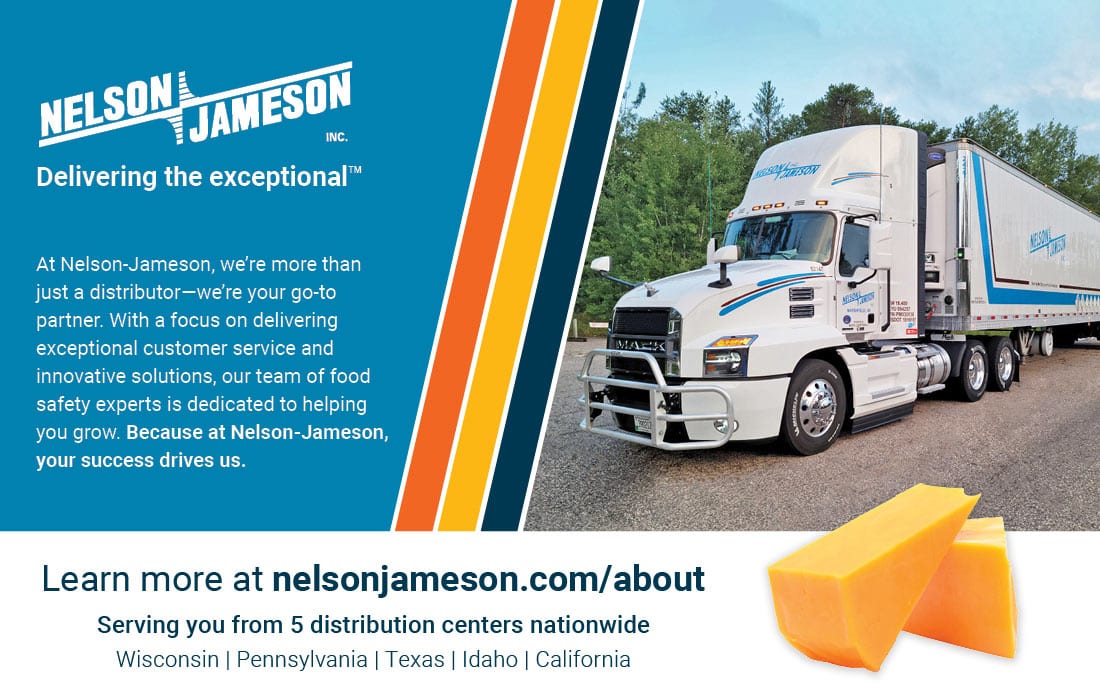BACK TO BASICS
By Jill Stuber and Tia Glave, Co-Founders, Catalyst LLC
Food Safety Culture: Moving from Checklist to Practice in 2024
A look at how whole-being competencies support technical leaders to shift culture through daily interactions and behaviors

Image credit: Hispanolistic/E+ via Getty Images
SCROLL DOWN
An industry survey conducted in December 2022 found that just 49 percent of companies had a food safety culture plan.1 While this data has not been updated since that time, it is likely that the percentage has increased as groups such as SQF (Safe Quality Food), BRCGS (Brand Reputation Compliance Global Standard), and FSSC (Food Safety System Certification) have adopted food safety culture standards. As with any new requirement, the first several years often lend themselves to "checklist compliance," whereby organizations are in the initial stages of meeting new standards. For example, they may have a written policy or procedure defining what they do regarding food safety culture—check! Food safety plan completed—check! Visibility and communication from top leaders explaining everyone's role and why food safety is important, etc.—check! Celebrate with pizza parties and prizes at the front lines to drive energy and excitement around food safety—check! Frontline team members are engaged—check! Does that mean organizations are ready to check "complete" for improving food safety culture?
Not a chance.
As we head into 2024, it is time to move from "checking boxes" to doing the work of creating and implementing a solid food safety culture improvement plan. Organizations are taking this opportunity to map out how to improve food safety culture in the next year—and, hopefully, over the next several years, as culture shifts are known to take several years to realize.
Where to Start with Culture Shift?
Imagine starting 2024 feeling confident in your organization's food safety culture improvement plan. Maybe you have collected data from surveys or interviews. Perhaps you have worked with top leaders to get food safety culture on the list of goals for 2024. As we know, food safety culture is more than checking boxes; it is about creating awareness, understanding, and ownership of shared beliefs and values across people in your organization. Food safety culture improvement demands that the organization not only has a plan, but that it has a clearly detailed plan for what is happening, who is acting in a leadership role, how new skills are being developed, and most importantly, how everyone is involved every day. Does that describe your organization's plan?
Shifting culture within an organization is a complex process that incorporates factors from how people work to what people believe. Culture work is not just about telling people how the company's values play out in everyday work like we often see done with food safety training. Unlike food safety training—where we focus on telling people why the practice is important based on the company's values—culture work is deep, soulful work that taps into people's beliefs and individual values. Culture work is about listening to individual people to hear what values, beliefs, and attitudes guide their everyday living and linking those to what matters as an organization. It is putting people first to drive how the organization does business today. It is a paradigm shift from just saying "people are our greatest assets" to demonstrating that belief.
It is no wonder that this slight yet powerful nuance in how we value people has tipped the axis for how leaders lead, including how we approach food safety culture. This past year brought continued conversations at webinars, meetings, and conferences about food safety culture, yet the question often asked by the audience after each of these events is, "How do we actually do food safety culture?" It is no wonder that a group of classically trained food safety and quality experts are asking this question. Food safety culture challenges food safety professionals to explore and learn a new skill set for understanding whole beings, including human behavior, motivation, and engagement. Even the most seasoned or successful food safety leader likely has not had the training or experience to easily navigate food safety culture alone.
“Food safety professionals are at a pivotal stage of being invited to evaluate core competencies for leading, not just managing food safety culture.”

Differences Between Management and Leadership
Traditional leadership skills typically sponsored by human resources, such as navigating conflict, difficult conversations, and corrective action, are about managing people, not leading people. Managing people is about controlling what they do, while leading is about inspiring people to do the right thing. Food safety professionals are at a pivotal stage of being invited to evaluate core competencies for leading, not just managing food safety culture. In this day and age, simply being technical experts with traditional leadership skills is not sufficient to effectively lead food safety culture. If this describes you—do not worry. You are not alone, given that 70 percent of people have not mastered the skills they need to be successful in their role today.2 What skills do you need to master, and what is the commitment needed to master them?
Let us start with what skills are needed. Whole-being competencies such as creating safe spaces, exploring self-awareness, cultivating feedback, practicing compassion, and leaning into people's gifts and talents are the foundation of culture that the evolving workforce wants to experience.3 Team members are looking for trust—trust that they will be accepted as they are, trust that their work matters, and trust that their gifts and talents will be developed. A leader who is focused on creating and fostering whole-being trust will allow food safety culture to flourish.
Here are two areas to practice whole-being skills:
- First, practice putting humans first with the sole purpose of creating connections and community, not because of work. Humans are thirsty for connection and validation, as illustrated by Oprah's simple principle that people want to know, "Do you see me? Do you hear me? Does what I say mean anything to you?"4 Human nature is to connect; yet, we are so busy being "busy" at work that intentionally creating space for real connection can be challenging. In their business, the authors use the "three Ps" of Personal, Professional, and Priorities to guide people to bigger and better questions to source human connection. A simple example is instead of asking "How are you today?" ask "What has brought you joy today?" After practicing these techniques for a week, clients reported that they could hardly get work done because so many people were coming to them. This is evidence that when we intentionally prioritize human connection, people respond with engagement.
- Next, be more influential for what you need. When we talk with food safety and quality assurance (FSQA) teams, the biggest hurdles to improving food safety culture are often time and money. However, when we ask the same people how they have communicated their needs and asked for what they want, they show us data. This is where we see holes in their ask. People make decisions based on emotion, not logic, and FSQA people are notorious for using data, science, and regulations to make requests. How can you use data but sprinkle inspiration into the ask to connect with your audience's emotions?
Securing Commitment from All
While you can start with these two practices, in reality, it is a journey to master whole-being skills. It begs the question: Is there a true commitment to master the necessary skills? The short answer is that people are ready for more, and they want more. Your team is just as passionate to contribute to daily behaviors that lead to improved food safety culture. However, 74 percent of people say lack of professional development keeps them from their full potential,5 yet 45 percent of managers do not feel confident in their ability to develop the skills employees need today.6 That is shown by managers only spending, on average, 9 percent of their time on developing their direct reports.6
Here is where investing in leadership development that is focused on whole-being competencies can bridge the gap. It will not happen overnight, especially with the overflowing plate of work that most FSQA professionals experience. That is where commitment comes in. Do you ever wonder who can advocate on you and your team's behalf for commitment—both for time and money? Look to your Human Resources team. According to statistics, 89 percent of human resource leaders agree that constant employee training is essential, so they may be willing to invest in you and your team's development journey.7 Better yet, bring them a solution that has proven success. Look for relatable, progressive, forward-thinking, and coaching-based approaches that can develop whole-being competencies that are good for people and also good for the bottom line.8
It is in your hands. We have all heard the phrase, "what got you here won't get you there," so if you are serious about moving food safety culture forward in 2024, then you must do things differently. It is not about using a checklist to move forward; it is about developing and engaging technical experts to become better technical leaders who practice human skills every day. That is what food safety culture is all about.
References
- 1 Brill, Jason. "The Pulse: Food Safety Culture Plans." Quality Assurance Magazine. January 3, 2023.
- Glaveski, Steve. "Where Companies Go Wrong with Learning and Development." Harvard Business Review. October 2, 2019. https://hbr.org/2019/10/where-companies-go-wrong-with-learning-and-development#:~:text=75%25%20of%201%2C500%20managers%20surveyed,programs%20to%20their%20jobs%3B%20and.
- Mercer. "Rethinking What We Need from Work: Inside Employees' Minds 2022–2023." https://www.mercer.com/en-us/insights/talent-and-transformation/attracting-and-retaining-talent/rethinking-what-we-need-from-work-inside-employees-minds-2022/.
- "The Oprah Winfrey Show Finale." Oprah.com. May 25, 2011. https://www.oprah.com/oprahshow/the-oprah-winfrey-show-finale_1/7.
- Heinz, Kate. "6 Reasons Why Employee Development Is Key." March 8, 2023. Built In. https://builtin.com/company-culture/employee-development.
- Baker, Mary. "Gartner Says 45% of Managers Lack Confidence to Help Employees Develop the Skills They Need Today." Gartner. September 18, 2019. https://www.gartner.com/en/newsroom/press-releases/2019-09-18-gartner-says-45--of-managers-lack-confidence-to-help-.
- M., Maria. "28 Interesting Employee Training Statistics." Leftronic. March 23, 2022. https://leftronic.com/blog/employee-training-statistics/.
- Walsh, Dylan. "Soft skill training brings substantial returns on investment." December 11, 2017. MIT Sloan. https://mitsloan.mit.edu/ideas-made-to-matter/soft-skills-training-brings-substantial-returns-investment.
After careers of working in food safety and quality for large and small companies, Tia Glave and Jill Stuber struck out on their own, founding Catalyst LLC, a business management consulting company that provides a roadmap for food manufacturers and retail organizations to build sustainable food safety cultures. Together they coach food safety and quality assurance professionals to make a difference at their companies by becoming better leaders and building food safety and quality into a trusted business asset to protect consumers, brands, and companies. Their clients can be found across top retailers and manufacturers and in startup companies in dairy, poultry, meat, produce, meals, baby food, snack food, beverages, and grains.

